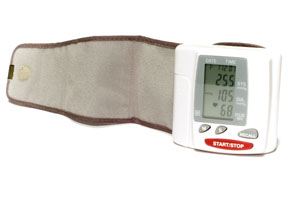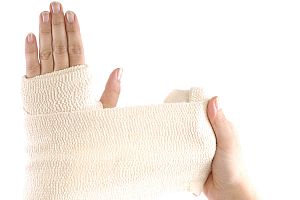What is a “Pinched Nerve”?

A “pinched nerve” refers to a condition in which a nerve is compressed by surrounding tissue, such as ligament, cartilage, tendon or bone. The term “pinched nerve” is not a standard medical expression, but it’s an intuitive expression that almost anyone will understand.
Nerves radiate from your brain, down your spine and to all other parts of the body. Signals are sent from and to the brain along the nerves, and if a nerve is compressed (“pinched”), it will interfere with proper signal transmission. Usually, this will manifest as pain, not only at the site of compression, but sometimes radiating from that point to surrounding parts of the body. Misalignment of the spine can result in pinched nerves that can give you back pain and even a deadening ache or sensitivity along your arms (cervical radiculopathy) or legs (sciatica).
Any pain of this sort is a warning signal that there is a problem that should be treated right away. Left untreated, pinched nerves can lead to a loss of the protective barrier around the nerves which could generate fluid buildup. And this fluid would create swelling, more pressure, more pain, and possibly scarring. When nerves have been scarred, they may no longer function properly.
Pain isn’t the only indication of a pinched nerve. Sometimes a compressed nerve will generate numbness or tingling, a burning or “pins and needles” sensation, or even weakness during certain activities.
Pinched nerves can occur more often when the following risk factors are involved:
- Overuse—Repetitive actions such as movements during work or while involved in a hobby or sport.
- Posture—Bad posture creates more pressure on the spine and the nerves traveling through it.
- Gender—Women’s carpal tunnels are smaller and are at greater risk for carpal tunnel syndrome.
- Rheumatoid arthritis—Inflammation of any kind can compress nerves, especially at the joints.
- Obesity—Increased body weight can increase pressure on nerves throughout the body.
- Bone spurs—Bone thickening (from conditions such as osteoarthritis) or trauma can lead to bone spurs that stiffen the spine and narrow the space through which the nerves pass.
Mainstream medicine frequently recommends drugs, including NSAIDs, oral corticosteroids, narcotics (for emergency, short-term pain relief) and steroid injections to treat the symptoms of a pinched nerve. The Mayo Clinic suggests that patients can sometimes recover within a few days or weeks from pinched nerves with rest and additional “conservative treatments.” Other mainstream medical treatments may include physical therapy, a splint to immobilize a limb to give it a bit of rest, or surgery.
A chiropractor specializes in nerve health and non-invasive methods of reducing pain and restoring proper function, including spinal adjustments and other treatments that take the pressure off the nerves without the need for drugs or surgery. Sometimes a single adjustment can lead to immediate relief. In other cases, repeat visits may be required for full recovery. If you or someone you care about is suffering from a pinched nerve, you should know that there are alternatives to drugs and surgery and that chiropractic care has proven effective in treating the source of the problem so it is less likely to recur in the future.
If you would like to be seen by Dr. Oblander for treatment of a pinched nerve or any other ailment, please call our office at 406-652-3553 to schedule an appointment.


 Although you may have heard the term before, you may not know exactly what a “shin splint” is. It’s a common term for painful inflammation at the front of the tibia caused by strenuous activity. Medical professionals refer to it as medial tibial stress syndrome (MTSS). The following exercises will not only help to prevent shin splints or MTSS, but the first two exercises can also help relieve some of the agony for those who are already suffering from the syndrome. If you already have shin splints, use care and restraint in performing these exercises.
Although you may have heard the term before, you may not know exactly what a “shin splint” is. It’s a common term for painful inflammation at the front of the tibia caused by strenuous activity. Medical professionals refer to it as medial tibial stress syndrome (MTSS). The following exercises will not only help to prevent shin splints or MTSS, but the first two exercises can also help relieve some of the agony for those who are already suffering from the syndrome. If you already have shin splints, use care and restraint in performing these exercises.
